Sausage-Making Traditions
December 7, 2023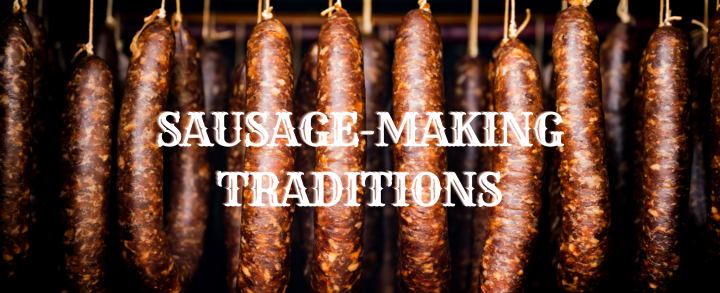
Connecting Generations of Texas Hunters and Ranchers to Their European Heritage
BY: Dan Oko
For many Texas families, hunting season doesn’t truly end till the last venison sausage is seasoned, stuffed and smoked. What’s more, like scoping habitat, stalking game and setting up deer stands, butchering and processing game gives parents and grandparents a chance to teach children and grandchildren to appreciate the outdoors. For those families who still make their own sausage, it can strengthen connections to the land that span generations.
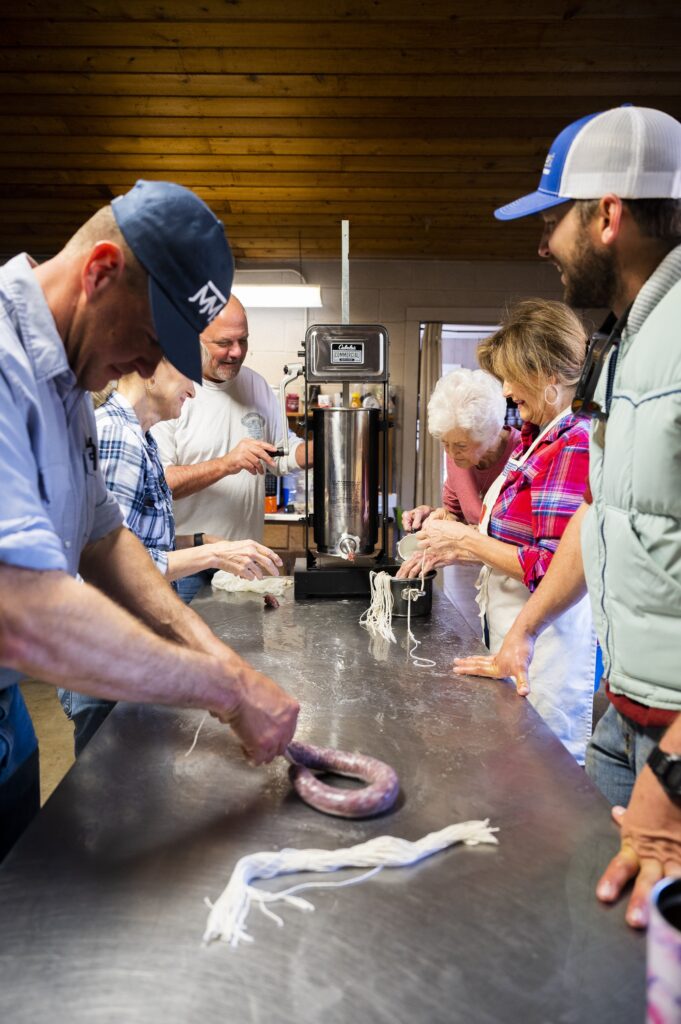
For Carolyn Vogel, a 6th generation Texan raised down the road from her family’s farm and peach orchard outside of Fredericksburg, some of her fondest memories are the January weekends when assorted siblings, cousins and grandkids would gather together — a tradition that continues to this day. Indeed, Vogel’s mother Nelda is 89 is still an active hunter, and her brother-in-law Scott, who was a corporal in the Army, has taken over for her late father, spreadsheet in hand. “It’s very organized chaos,” says Vogel, who is the oldest of five siblings.
Her father had one big rule, says Vogel: No sage, and it’s a rule they abide to this day. The old family recipe, however, came down from her mom’s side of the family. Vogel fondly recalls an uncle who made older, authentic styles of German sausage, like blood sausage and head cheese. For a few years, the operation was sidelined as Vogel and her siblings made their way in the world, but after her father died they realized it was an important ritual to keep.
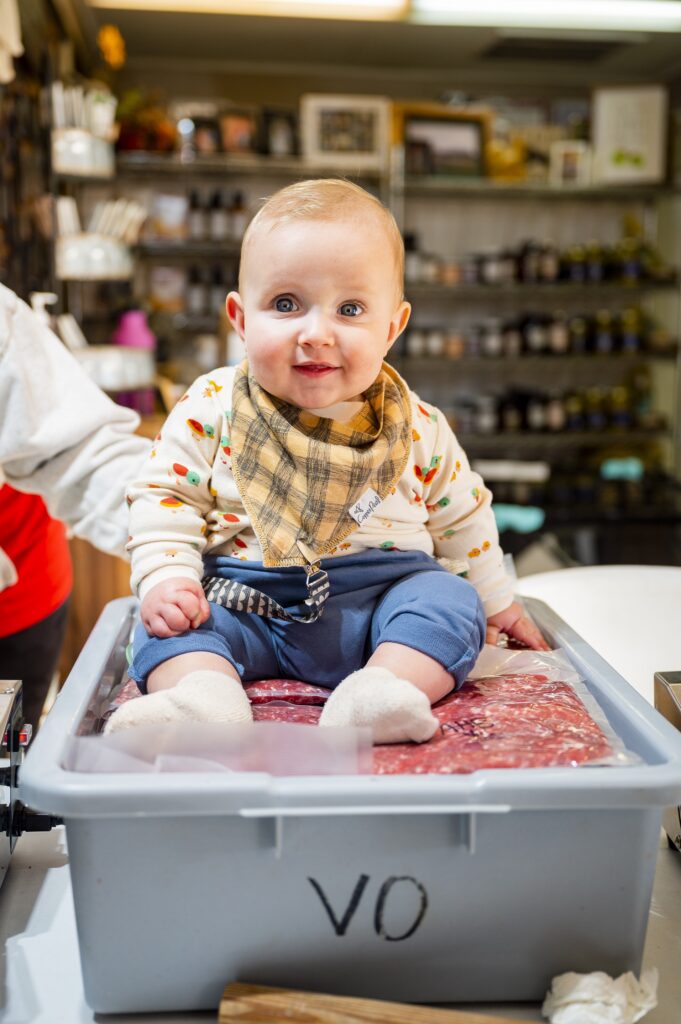
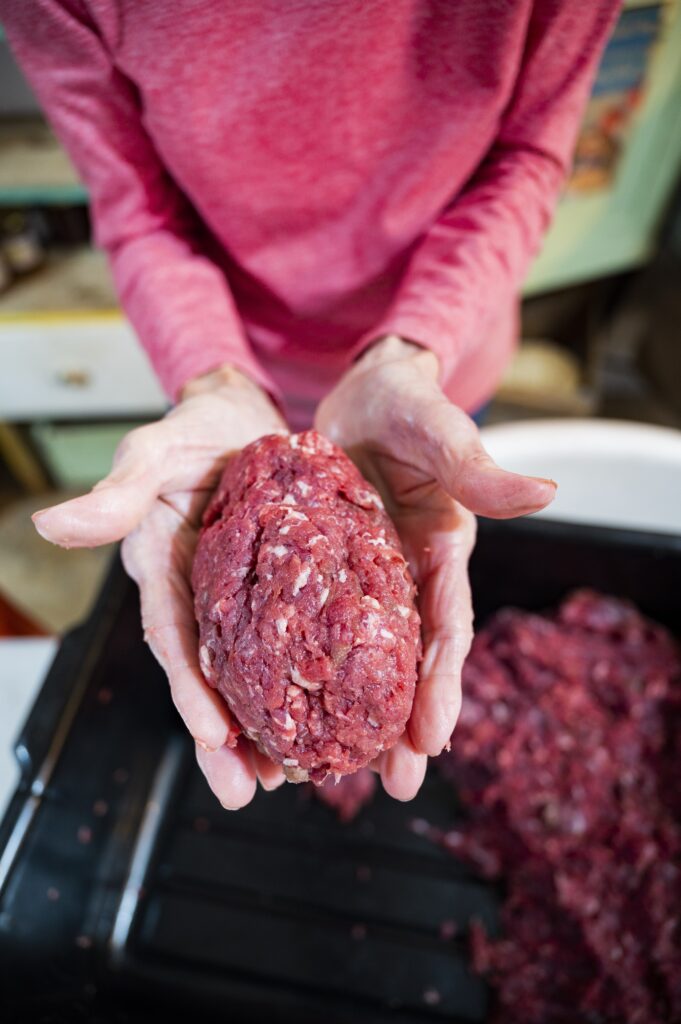
Indeed, for many farming and ranching families in the Texas Hill Country, the making of sausage connects them to an older European heritage — most often German, as in the case of the Vogels, and some Czech, who arrived a little later — that has shaped the entire region. The rise of the Texas cattle industry in the late 1800s coincided with the growing number of German immigrants, many arriving in the wake of the revolutionary wave that swept Europe in 1848. These new German settlers came looking for a better life, and some found work in meat markets, making smoked sausage from beef scraps seasoned with garlic, salt and pepper.
The Vogels enjoy the use of the commercial kitchen at their orchard, idle in winter, for what remains a decidedly family affair. To make sausage, a few of the die-hard hunters gather a week or so ahead of time to debone and butcher whatever has been harvested. Once that’s finished, as many as 15 assorted relatives, representing three or even four generations, enjoy a hearty daybreak breakfast before the grinding and mixing begins in earnest.
It’s an effort that can take a couple of days, with the Vogels stuffing dozens of sausage links and bagging pan sausage. They also grind venison for chili, burger meat, and hang some jerky to dry. “If I told you a little bit of bourbon was consumed, you wouldn’t be surprised,” Carolyn Vogel adds. “With 300 to 400 pounds, it’s enough that all families are supplied for the year.”
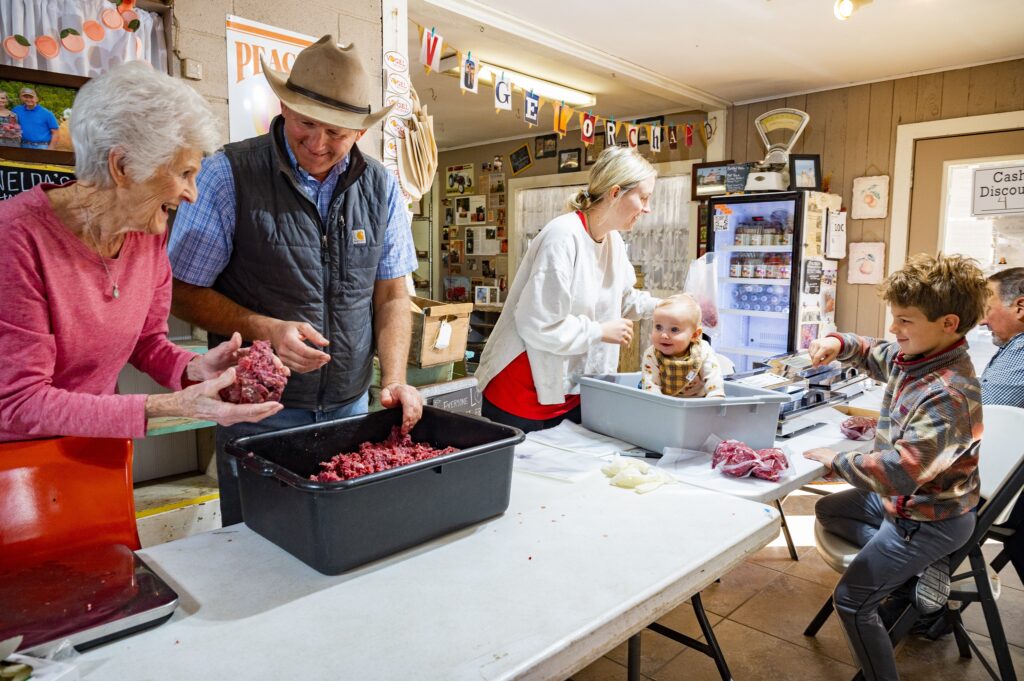
Lee Kothmann is another native Texan, who can trace both sides of his ancestry back to Germany. They rode wagon trains from Indianola in 1845, and settled near modern-day Menard. His great great grandfather and great great granduncle, in fact, were held captive by the Apache. Today, near where the Kothmann clan gathers to process venison and make sausage, a stone house built from locally quarried sandstone stands as a reminder of the tough old days. Just 12-feet-by-12-feet, the rock room was built to withstand Apache attacks.
“Hunting has always been an important part of my life,” says Kothmann, who embraces “slow hunting,” stalking prey across his family land rather than sitting in a stand. It’s a practice learned from his father, who passed away several years ago, and Kothmann is now teaching his oldest son, who turned 10 last year. “Even though we are cattle ranchers, we mostly eat venison,” he says. “We see it very much as a way to provide food for the table.” After a few years when interest in making sausage faded — a tornado blew down the old smokehouse in 1994, and his grandmother died — Kothmann found he missed the annual gathering of family and friends that followed a successful hunt. “Something that is that ingrained and valued, you just don’t want to let it go,” he says, “and it never really went away.”
“We have a note card from my dad,” he says. “Just add salt, garlic and pepper, it’s the law.”
Lee Kothmann
These days, Kothmann reckons, a group of 12 to 15 regulars gather each winter to make sausage, and kids take part too. They have found a rancher in the neighborhood who raises heirloom hogs, which the family processes alongside the deer, a new twist. Kothmann also has plans to build a new smokehouse. Still some things have not changed. The stuffing is 50 percent venison, 50 percent pork, and the only seasoning is salt, garlic and pepper. “We have a note card from my dad,” he says. “Just add salt, garlic and pepper, it’s the law.”
Salsa Verde & Wild Game from the kitchen of Chef Austin Simmons of Tris
February 11, 2025
Texas’ White Bass Run
February 11, 2025
From the Spring to Spirit: Goodnight Loving Vodka
February 11, 2025